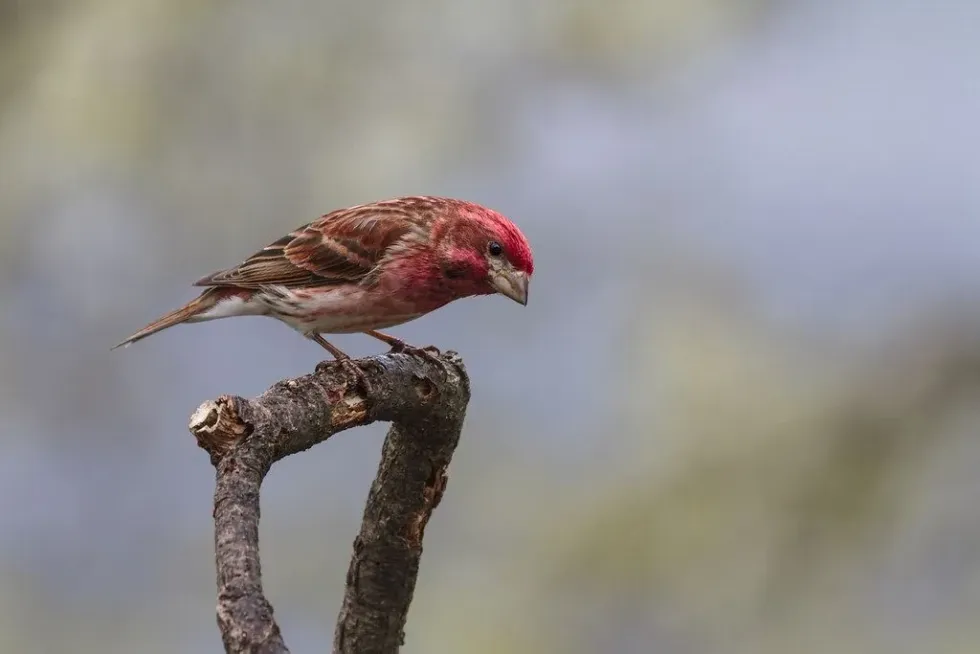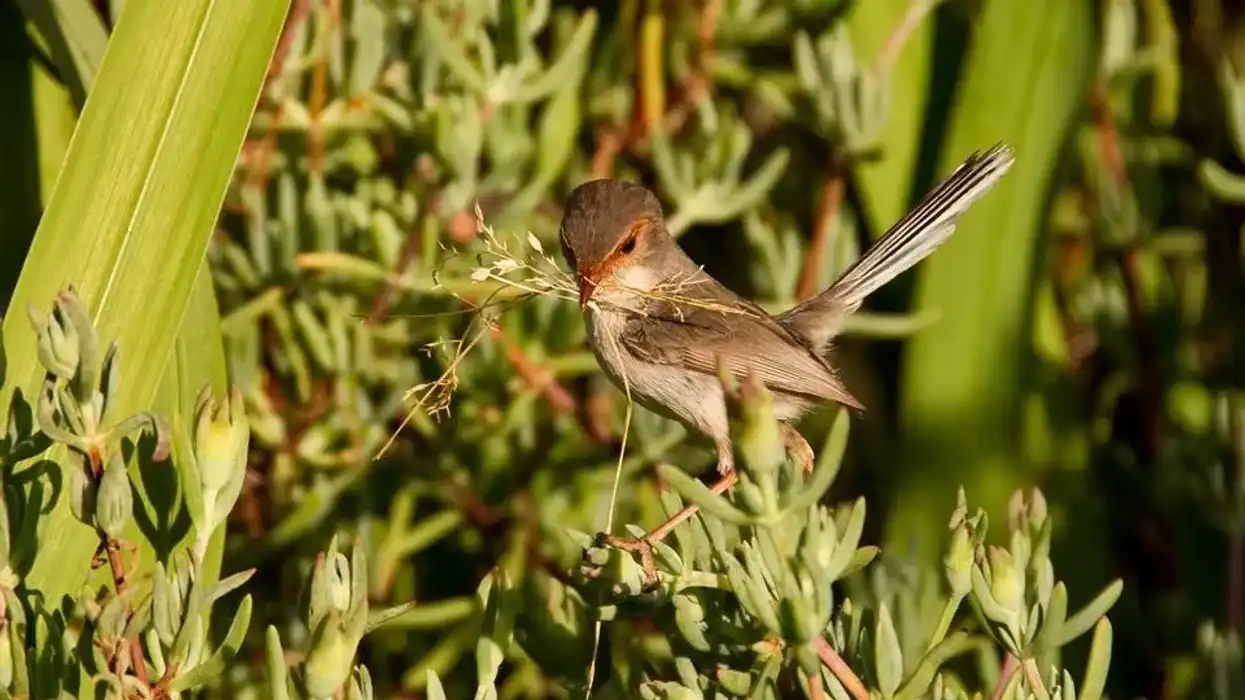If you are a bird lover or love to know about different bird species, then you must already be eager to know more about this purple finch bird.
Purple finches are pretty small birds that are very frequently seen in the North American regions. This bird prefers to live in the forests and urban environments. Its nest is generally found closer to human habitation.
Both the purple finch female, as well as the male, are extremely social birds. The males are famous because of their pink red color which makes them look very vibrant.
The females are brown and white in color. The purple finch song is an important aspect of this species. Purple finch male and female sing songs to each other on trees and in the nest to express their desires.
They also sing a song in flocks on the arrival of winter. Purple finch songs consist of six to 23 notes.
They eat buds, insects, and flowers' seed. During nesting, the females tend to eat more. This article will give you a bird guide on the purple finches and purple finch facts.
If you like this article about the purple finch facts, you may also want to check our other animal facts articles on blue jay and chinstrap penguin
Purple Finch Interesting Facts
What type of animal is a purple finch?
The purple finch is a type of North American bird.
What class of animal does a purple finch belong to?
Purple finches belong to the class of aves and of the Fringillidae family.
How many purple finches are there in the world?
There are an estimated 6.4 million of these North American birds in the world.
Where does a purple finch live?
Purple finches stay on trees and near ground when they are living in open woods. They feed in these locations as well. These North American birds are best suited to live in forests and also urban environments. They tend to make their nest on a horizontal branch of a tree or the fork of a tree.
What is a purple finch's habitat?
This species is found in plenty along the seaboard and the coastal side of the Pacific along with the North and East of the United States of America. Most of the North American regions in winter have common sightings of these North American birds.
This forms their primary habitat. In winter, you can also find them throughout the Eastern United States and southern Canada. In most of the Eastern United States, purple finches are migrants for just short distances.
Who do purple finches live with?
Purple finches are migrants and they tend to follow cone crops. These birds are a species that are socially active and can flock with 200 birds during the winters. These flocks can consist of pink skins, American goldfinches, and other finch species.
How long does a purple finch live?
The average lifespan of this bird is three to four years. Although it is not uncommon for them to live up to six or seven years.
How do they reproduce?
Purple finches bird species have this natural instinct of choosing a breeding range that is closer to human habitations during winter and nesting. The female lays around three to six eggs at a time.
The eggs are blue in color with black spots on them. The two birds select a good nesting site, usually in the branches of tall trees. During the period of incubation, the male assumes the responsibility of feeding the female.
He also tends to the young once the eggs get hatched. The young bird leaves the nest after 13-16 days.
What is their conservation status?
There are an estimated 6.4 million purple finches in the North American subcontinent. Although the finch populations are declining with time.
The main reason for this is the competition with other finches for space and food. The purple finches were introduced in the eastern regions in 1940 by the bird conservation authorities but they are having trouble adapting to the conditions there ever since. Studies are being conducted to promote their growth and conservation in the eastern parts.
Purple Finch Fun Facts
What do purple finches look like?
Purple finches are timid birds with a long tail, conical bill, and robust body. Even if they are named purple finch (Haemorhous purpureus) they are not purple in color.
The females have a brown back and white beasts with characteristic brown streaks on the abdomen. The males are much more vibrant in color with pink red all over the back and front. The quantity of their color is an important factor in depicting the health of the bird.
How cute are they?
The purple finches are tiny and extremely good-looking birds. Especially the males with their wine-like colors can catch the instant attention of ornithologists, and even everyday people.
The social and friendly nature of these birds makes it even more pleasing to watch when they flock together. Their loud yet melodious chirping only adds more to their features making the purple finch (Haemorhous purpureus) a very cute bird species.
How do they communicate?
The purple finches are very social creatures and thus communicate well. They convey their irritation with loud sounds and body postures. Singing a song on trees and in their nest is an important way of communication for these birds.
During the mating season, males sing a song in defense of their territories. Even the females sing a different song in their nests. They are also known for their warbling sounds when they fly in flocks which consist of around six to 23 notes.
How big is a purple finch?
The purple finches are approximately 4.7-6.3 in long in size.
How high can a purple finch fly?
The purple finches can fly around 60 feet above the ground and they make their nests at a height within that limit. Their tiny structure does not allow them to fly higher because of the air getting thinner.
How much does a purple finch weigh?
The adult purple finches weigh around 0.04-0.06 lb.
What are their male and female names of the species?
The scientific name for this bird species is Haemorhous purpureus but there are no different names given to male purple finch and female purple finches based on gender.
What would you call a baby purple finch?
The newborn purple finches are also called chicks like most birds.
What do they eat?
The food habits of the purple finches change with the seasons. Purple finches eat seeds of elms, sunflower seeds, tulip trees, cedars, millet, junipers. They also like to eat buds, fruits, berries, and tiny insects.
Are they loud?
They are extremely loud when they get happy. During their mating season, they sing songs to their counterparts.
They also sing songs on the arrival of the autumn and winter season. Apart from that, they tend to get shrill if they sense any danger around. Due to their social nature, they are often found in flocks and thus their voices resonate and tend to get louder.
Would they make a good pet?
Purple finches make absolutely great pets. They bring joy, peace, and positivism to the home. These birds are known to very loud as well as extremely interactive. The purple finches mingle extremely well with fellow humans. Children are often entertained by these birds as they often sing and communicate with them.
Did you know...
Purple finches are a symbol of high energy, plus better, more brighter days! Purple finches tend to display their anger by leaning and stretching of necks towards the bird they are fighting with or angered by.
Purple Finches have large, seed-cracking beaks, and they very much like black oil. Purple finches are important in seed dispersion for plants on which they feed.
The bird is believed to denote optimism and a reminder of the brighter times to come. The species gets its name, purpureus, which comes from Latin and means crimson or other reddish colors.
What is the difference between a house finch and a purple finch?
Purple finch vs house finch has been an interesting study for ornithologists across the world. They are of similar shape as well as size, but the color is one of the major differences between these two species. The males especially can be easily differentiated by the color shades on them.
The male house finches are red and orange in color while the male purple finch is a shade of purple mixed with red. The house finch also has streaks on the sides.
The purple finch has stripes but no streaks. It is difficult to notice the difference between the female purple finch and the female house finch. They both have shades of brown and white over them.
What color are purple finch eggs?
The purple finch nest contains the eggs of this bird species. The eggs are light blue in color. They also have black spots over them.
Here at Kidadl, we have carefully created lots of interesting family-friendly animal facts for everyone to discover! Learn more about some other birds including red finch, or house finch.
You can even occupy yourself at home by drawing one on our Purple finch coloring pages.









